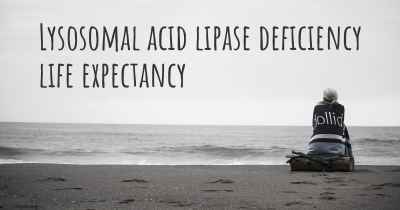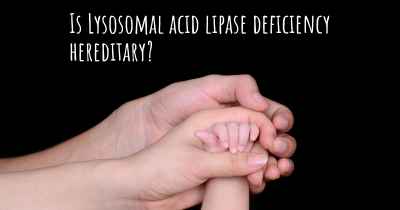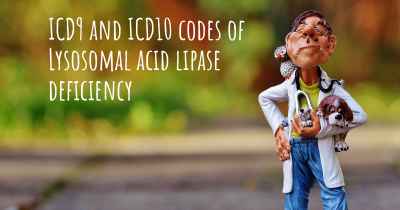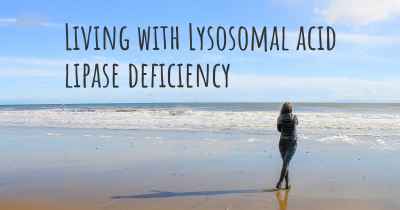How is Lysosomal acid lipase deficiency diagnosed?
See how Lysosomal acid lipase deficiency is diagnosed. Which specialists are essential to meet, what tests are needed and other useful information for the diagnosis of Lysosomal acid lipase deficiency
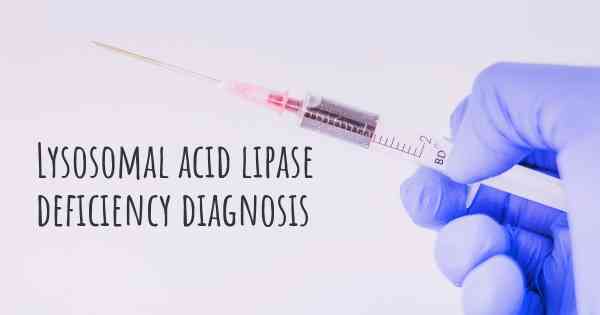
Lysosomal acid lipase deficiency (LAL-D) is a rare genetic disorder characterized by the buildup of lipids in various tissues and organs. It is caused by mutations in the LIPA gene, which encodes for the lysosomal acid lipase enzyme. This enzyme is responsible for breaking down cholesterol esters and triglycerides in the lysosomes, the cellular compartments involved in waste disposal.
Diagnosing LAL-D can be challenging due to its rarity and the variability of symptoms. However, early diagnosis is crucial for initiating appropriate treatment and preventing disease progression. There are several diagnostic methods used to identify LAL-D, including clinical evaluation, laboratory tests, and genetic testing.
Clinical Evaluation:
The first step in diagnosing LAL-D involves a thorough clinical evaluation. The healthcare provider will review the patient's medical history, assess their symptoms, and perform a physical examination. LAL-D can present with a wide range of symptoms, including hepatomegaly (enlarged liver), splenomegaly (enlarged spleen), dyslipidemia (abnormal lipid levels), and liver dysfunction. These clinical features, along with a family history of LAL-D, can raise suspicion for the disease.
Laboratory Tests:
Laboratory tests play a crucial role in diagnosing LAL-D. Blood tests are commonly used to assess liver function, lipid levels, and the presence of specific biomarkers associated with LAL-D.
1. Liver Function Tests: These tests measure the levels of liver enzymes, such as alanine aminotransferase (ALT) and aspartate aminotransferase (AST), which can indicate liver damage or dysfunction. Elevated levels of these enzymes may suggest LAL-D.
2. Lipid Panel: A lipid panel measures the levels of cholesterol, triglycerides, and other lipids in the blood. LAL-D is characterized by dyslipidemia, with low levels of high-density lipoprotein (HDL) cholesterol and high levels of low-density lipoprotein (LDL) cholesterol and triglycerides.
3. Biomarker Analysis: There are specific biomarkers that can help in the diagnosis of LAL-D. One such biomarker is lysosomal acid lipase activity, which can be measured in white blood cells or fibroblasts. Reduced activity of lysosomal acid lipase is indicative of LAL-D. Another biomarker is cholesteryl ester storage disease (CESD) protein, which can be detected in the blood. Elevated levels of CESD protein may suggest LAL-D.
Genetic Testing:
Genetic testing is the most definitive method for diagnosing LAL-D. It involves analyzing the patient's DNA to identify mutations in the LIPA gene. This can be done through various techniques, such as targeted gene sequencing, whole exome sequencing, or gene panel testing.
Genetic testing can confirm the presence of LAL-D and identify the specific mutations responsible for the disease. It can also help differentiate between LAL-D and other conditions with similar symptoms. Additionally, genetic testing can be used for carrier testing in family members of affected individuals.
Other Diagnostic Methods:
In some cases, additional diagnostic methods may be used to support the diagnosis of LAL-D or assess disease severity.
1. Imaging Studies: Imaging techniques, such as ultrasound, computed tomography (CT), or magnetic resonance imaging (MRI), can be used to evaluate the size and structure of the liver and spleen. These imaging studies can help assess the extent of organ enlargement and detect any abnormalities.
2. Liver Biopsy: In certain situations, a liver biopsy may be performed to examine the liver tissue under a microscope. This can help assess the degree of lipid accumulation and determine the severity of liver damage.
Conclusion:
Diagnosing Lysosomal acid lipase deficiency (LAL-D) requires a comprehensive approach involving clinical evaluation, laboratory tests, and genetic testing. The combination of these diagnostic methods helps healthcare providers confirm the presence of LAL-D, differentiate it from other conditions, and assess disease severity. Early diagnosis is crucial for initiating appropriate treatment and improving patient outcomes.
